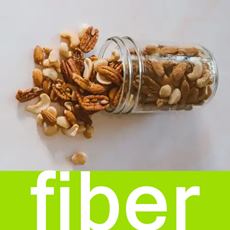Potassium Health Benefits and Use
Bone, Heart, and Kidney Health
Fact Checked
×All the content published in our website is fact checked to validate its accuracy.
Visit our guidelines web page to learn more about our strict processes regarding how we review our content's sources: reliable and reputable journals, media websites, universities, colleges, organizations, and professionals.
Our articles are based on scientific evidence, and the references are included in their footnotes, which are clickable links to sound scientific papers.
First published: 06. Dec.2024
Overview
Dietary potassium obtained from a balanced diet provides health benefits by reducing blood pressure and lowering the risk of stroke and coronary heart disease. It also promotes bone, and kidney health.
This article explores its sources, recommended daily intake levels, and its uses and risks.
References and Further Reading
(1) McLean RM, Wang NX., (2020). Potassium. Adv Food Nutr Res. 2021;96:89-121. doi: 10.1016/bs.afnr.2021.02.013. Epub 2021 May 24. PMID: 34112360
(2) Weaver CM., (2013). Potassium and health. Adv Nutr. 2013 May 1;4(3):368S-77S. doi: 10.3945/an.112.003533. PMID: 23674806
(4) Oberleithner H, Callies C, Kusche-Vihrog K, Schillers H, Shahin V, Riethmüller C, Macgregor GA, de Wardener HE. , (2009). Potassium softens vascular endothelium and increases nitric oxide release. Proc Natl Acad Sci U S A. 2009 Feb 24;106(8):2829-34. doi: 10.1073/pnas.0813069106. Epub 2009 Feb 6. PMID: 19202069
(5) USDA National Nutrient Database for Standard Reference Legacy, (2018). Nutrients: Potassium, K.
(6) Francis J. Haddy, Paul M. Vanhoutte, and Michel Feletou, (2020). Role of potassium in regulating blood flow and blood pressure. American Journal of Physiology-Regulatory, Integrative and Comparative Physiology 2006 290:3, R546-R552
About this Article
Potassium Health Benefits and Use, A. Whittall
©2024 Fit-and-Well.com. First Published: 06.Dec.2024. Update scheduled for 06.Dec.2027. https://www.fit-and-well.com/fitness/potassium.html
Tags: potassium, heart, blood pressure, bone, kidney, risks, supplements



